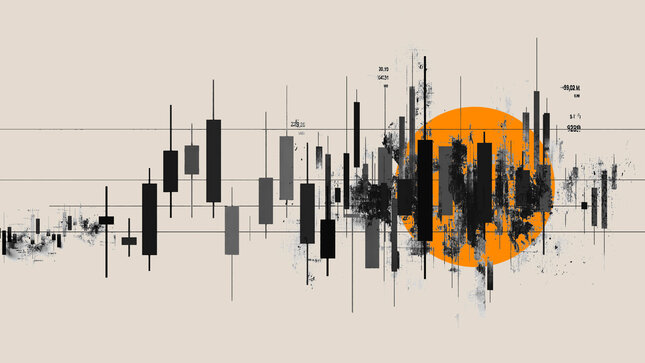
Asia wakes this morning in that eerie, cinematic hush that settles over markets when everyone knows a plot twist is coming but the script is still being redacted. Washington may have finally turned the lights back on, but the real story begins now: the data blackout ends, the macro firehose kicks back to full pressure, and traders must brace for impact.
For six weeks, we’ve been navigating the global economy by flashlight. Now the floodlights come on all at once—and markets never appreciate sudden clarity delivered in blinding doses. This isn’t confidence; it’s overexposure.
It feels like walking into a cavern after hours of darkness: the first instinct is to squint, the second is to freeze, and only much later do you understand the scale of the space you’ve entered. That’s precisely where Asia is sitting at the open—adjusting, blinking, trying to decode what’s waiting at the far end of this tunnel.
Risk appetite isn’t dead, but it’s definitely pale. Hong Kong is soft, Australia is heavier, Japan is trying to carve out a thin sliver of green. Bitcoin—once the mascot for unstoppable optimism—has slipped back below $94k and erased its gains for the year. The Nasdaq’s 4% pullback is still a garden-variety correction, but it hits differently when the entire AI complex is carrying the market’s oxygen tank. For the first time in months, traders are forced to acknowledge that even parabolic narratives wobble when the macro lights turn back on.
The Fed has suddenly become the market’s central riddle. December’s meeting is no longer a ceremonial rubber-stamp cut; it’s a clean coin toss. The case for easing is as persuasive as the case for pausing, and that symmetry alone tells you how fragile the narrative has become. Labour data has softened, productivity has surged, wage growth has cooled, tariffs on food are being dialled back—yet inflation’s sticky core refuses to go quietly, service prices are stubborn, and the economy remains surprisingly resilient despite the shutdown fog. You can feel Powell’s caution resetting across the street: December is “far from a foregone conclusion,” and the market is listening.
But the shutdown’s biggest consequence isn’t political—it’s operational. The entire data calendar is now a compressed cluster of releases arriving out of order, out of rhythm, and out of sync with positioning. Markets hate uncertainty almost as much as they hate irregular cadence, and this week delivers both. We’ll get payrolls, sentiment, production, housing, and consumption prints landing like overlapping tremors, each one capable of whipsawing near-term pricing simply because traders have been flying blind for weeks.
This is one of those rare windows where stale data meets fresh anxiety, and the result is usually messy.
The irony: even with the wobble, broad indexes hit fresh highs just days ago. The Dow printed records last week, reminding everyone that the underlying bull trend hasn’t broken—it’s just caught in a pocket of turbulence. That’s the part of the tape you can’t lose sight of. Corrections inside strong trends don’t signal collapse; they signal digestion. But digestion can feel like drama when valuations are stretched and the data plumbing is clogged.
China hasn’t helped the mood. October’s numbers were soft across the board—consumption downshifted, industrial output cooled, property investment tightened again. It’s not crisis; it’s slow bleed. The type of grind that saps risk appetite without triggering a policy panic. You can almost feel Beijing buying time, but the room for delay is narrowing.
Meanwhile, the hyperscalers’ debt binge has finally entered the mainstream discourse. Their AI-driven capex orgy was always going to show up somewhere on the balance sheet—the surprise is that investors are only now treating the leverage buildup like a market-wide variable, not a footnote. When your growth engines borrow this aggressively to maintain the AI arms race, the equity market has no choice but to start pricing convexity. That’s why tech wobbles matter more than usual right now: they’re happening at the same moment the macro fog lifts.
All of this leaves Asia in a holding pattern today—staring at screens, waiting for the data tap to open. Everyone wants to see the September and October prints that were swallowed by the shutdown. Everyone wants to know whether the labour market’s softness translates into December action or gets dismissed as noise. Everyone wants clarity on inflation’s composition. And everyone wants to know whether the U.S. consumer is a coiled spring or a tired engine.
We’re entering a stretch where the market will overreact to data not because the numbers are sensational, but because the tape has gone starved. Back-to-back releases will collide. Conflicting signals will emerge. Traders will struggle to price the near-term path. And the macro narrative will shift from smooth arc to jagged pulse.
Asia isn’t selling off.
Asia simply doesn’t want to make the first move.
This is the look-don’t-touch phase—the moment before the curtain lifts and the data storm finally fills the room. And when it does, the volatility expansion will come quickly, because the market has been flying blind for too long.
Today is the quiet breath before the orchestra hits its first note.



